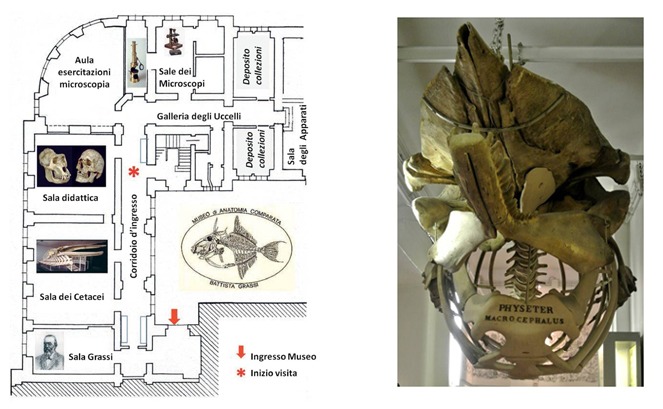
"BATTISTA GRASSI" MUSEUM OF COMPARATIVE ANATOMY
History
Like other scientific museums of the University of Rome, the origin of "Battista Grassi" Museum of Comparative Anatomy can be traced back to the Museum of Mineralogy and Historia Naturalis, which, during the pontificate of Pious VII, in 1805, was created at the Archiginnasio of La Sapienza. Many of the exhibits were registered in a hand written catalogue which dates back approximately to 1850, conserved at the State Archive. Other exhibits date back even further in time and originally belonged to the celebrated collection organised by the Jesuit Athanasius Kircherat the Collegio Romano, in the first half of the 17th century. This collection was pulled apart following the confiscation of the ecclesiastical assets after Rome was taken (1870). Proof that they once belonged to the Kircher collection can be found in the catalogue description of the Kircher Museum, compiled in 1709 by Bonanni.

The Grassi Hall
The discovery of the microscope in the 17th century immensely broadened horizon for the study of anatomical structures, with the possibility of analysing their microscopic organisation. Our aim in this corner of the museum was to recreate a work table from the end of the previous century, using equipment and furniture which belonged to Prof. Battista Grassi, who directed the Institute of Comparative Anatomy from 1896 to 1925. The name of this great Italian zoologist is linked to the identification of the malaria plasmodium insect vector, an important discovery which overshadows seminal contributions by Grassi to zoology and comparative anatomy, including the migration and metamorphosis of eels, termite castes, fundamental, medical and agrarian entomology.
For further informations Polo museale Sapienza.